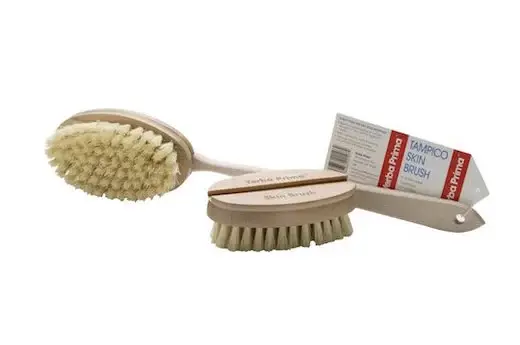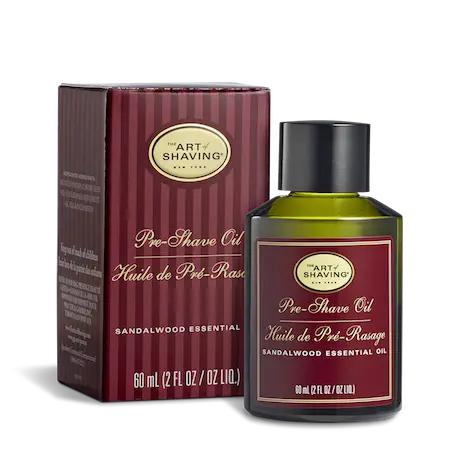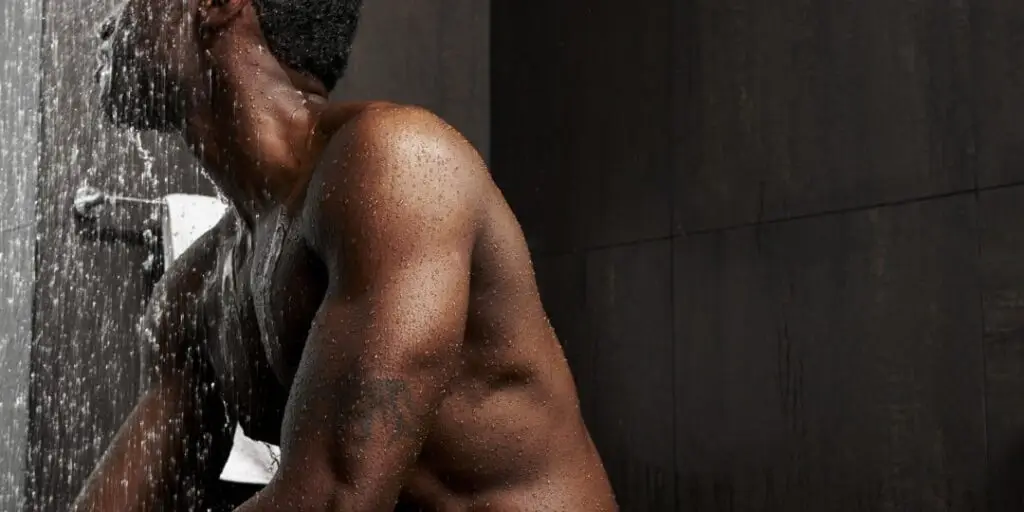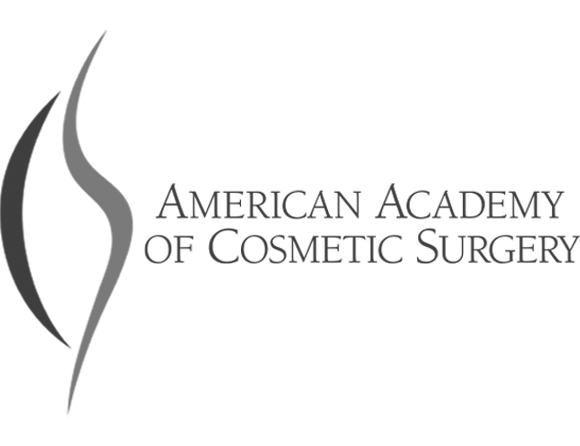How To Deal With Ingrown Hairs
To smite thine enemy, first you must know thine enemy: ingrown hairs are ugly beasts that can ruin your day. But they’re not mythical monster; they’re medical ones. Specifically, they are defined as curled hairs that grow sideways under the skin rather than outward, causing irritation and producing a raised red bump or painful sore. Ouch.
Ingrowns usually come from some method of hair removal, whether it’s shaving, plucking, waxing or threading. They can be itchy and uncomfortable, house a small amount of pus, and even display the offending hair through a small area of translucent skin.
This all sounds pretty gross, no? Well, it doesn’t have to. By the end of this guide you’ll be ready, willing, and (perhaps?!) even excited to take back control. (But at the risk of leaving your curiosity woefully unquenched and for the sake of your very sanity, don’t ever Google Image Search “ingrown hair.” Just don’t… ever. Ditto “acne extraction videos” — you’ve been warned.)
Let’s get started.
The Stigma
Prevention and treatment are critical (and we will get to them!), but first, let’s talk about the stigma behind ingrowns. Dr. Julia Avalon of Avalon Medispa weighs in: “After being in the business for over 10 years I realized just how many men are affected by little ingrowns and are sometimes too shy ask about them. Most of them do not even have a clue on how they could get treated or exactly what they are!” Fear not, shy guys, we can help.
Skin Conditions That Mimic Ingrown Hairs
From straight up teenager-style pimples to gnarly bacterial infections, many skin problems can be mistaken for ingrown hair. It may sound obvious, but knowing what’s an ingrown and what’s just a doppelganger is an important part of treatment. We spoke to the experts about the skin conditions that can mimic ingrown hairs.
There are some pretty unsavory look-alikes to watch out for. NCEA-certified aesthetician Kimberly Parent tells us about some of them: genital herpes (STD-formed blisters or painful itching sores); impetigo (a contagious bacterial infection starting with red bumps and developing into honey-colored pustules with crusty yellow sores); and abscesses (inflamed, swollen, pus-filled pockets that are also known as — and we’re not lying – furuncles).
But that’s not all on the look-alike front. They can be anything from totally innocuous to practically deforming. According to Tsippora Shainhouse, other possible look-alikes include acne (you may remember this from middle school as simply “some pimples”); perioral dermatitis (a pink bumpy rash); contact dermatitis (flaky, scaly, pink or bumpy skin from coming into contact with caustic chemicals); seborrheic dermatitis (pinkish, irritated, flaky or bumpy rash triggered in greasy areas); folliculitis (pink bumpy inflammation of the hair follicles that sometimes leads to pustules); pseudofolliculitis barbae (hard, purplish bumps that develop from inflammation of hair follicles); sebaceous hyperplasia (enlarged oil glands that look like fleshy bumps); and keratosis pilaris (a buildup of skin that leads to bumps).
Here are a few more skin conditions for you to watch out for: eczema (thick, blistery, crusty skin also known as skin asthma), heat rash (also known as miliaria, which is not to be confused with malaria!), dry skin, and whiteheads (you may also remember these bad boys from your greasy teenage days).
As you can see, there are lots of nasty skin conditions out there. So let us be clear: this is by no means a complete list of what to watch out for, so go see a specialist for the proper diagnosis!
The Most Affected Skin Types
The human race is filled with beautiful people of all shapes, sizes and colors. What could set one’s sensitive skin ablaze with irritation could be a soothing scrub for another’s hardier epidermis. Tsippora Shainhouse of Rapaport Dermatology of Beverly Hills provides an idea of the skin types and parts of the body that are the most affected by ingrowns. In men, ingrown hairs usually show up on the face, neck and groin. Yep, all the most visible and/or most sensitive areas of the body we specifically don’t want them showing up on. And bad news, black-skinned and Hispanic guys: you tend to have coarser hair and this tightly curled hair is more likely to become ingrown.
Prevention
When You’re Showering
Aside from cleanliness (which we’ve heard is right up there next to something important from the Bible), showering is a good ingrown prevention tactic. Jennie Ann Freiman, MD, founder of wellness blog OObroo Tips, offers up a simple fix: the loofah. No need for fancy products; when men shave, wax or use whatever their preferred method to control “the fuzz,” skin grows over the treated area and traps the newly growing hair below it, leading to ingrowns. So the best thing to do is loofah daily, disrupting the newly growing skin and preventing it from trapping newly growing hair.
When it comes to preventing ingrown hairs, your two main categories of prevention, according to Freiman, are mechanical and chemical. Those interested in wellness often choose mechanical over chemical, and the best example of that is a plant-based based loofah (as opposed to synthetic options such as plastic). There are other natural choices such as the (generally coarser) sea sponge, but the texture of the loofah is ideal for gentle exfoliation.
More on Proper Loofah’ing
It’s not rocket science: wet the loofah to soften it, then exfoliate, then focus on actually washing your body using a circular motion to remove dead skin and loosen embedded hair. That means no scrubbing like you’re furiously buffing a dent out of the hood of your Ferrari.
With regular use, loofah’ing works as a prevention, not as a treatment. So on average, says Freiman, you should loofah twice a week. But treat it with care, as if it were a towel: let it dry out thoroughly between each use, launder it regularly in hot water (the dishwasher works too), and don’t share it with anyone. Why? Bacteria can cause folliculitis (the medical term for ingrowns is pseudofolliculitis), so not caring for your loofah can easily turn it into a bacteria and mold breeding ground, defeating the purpose of using it in the first place!
One day (maybe after about a month) your loofah will start to fall apart. When it does, don’t go on using it until it disintegrates — replace it! If you’re feeling extra adventurous, an alternative to the loofah is dry brushing, which achieves a similar effect without the water and the concern of mold and bacteria “festering in the dampness.” (Jennie recommends the Yerba Prima Tampico skin brush made from the unbleached stem of the agave plant.)

When You’re Shaving
It’s not just straight razors and little cuts you have to dab with a tiny piece of toilet paper: shaving is a hazardous activity for those prone to ingrown hair. The founder of Eastside Dermatology and Derm Warehouse, Dr. Alan J. Parks, says that to prevent ingrown hairs, simply make sure you’re shaving with a sharp razor or just avoid shaving certain areas that are prone to those pesky hairs.
Close shaves are what we’re fed by commercials and the media, but it’s actually a very close shave that causes you to get ingrowns. Dr. Schultz recommends shaving only at the end of the shower, shaving with the grain, using a shaving gel, and (for goodness sake) don’t push too hard on the razor.
The best way to keep your razor as sharp as, well, a razor? According to Jeffen Mok of Cutman Skincare fame, the best way to keep your razor blade sharp is to keep it dry because a wet blade speeds up oxidization, which creates rusting and dullness. So use a towel or blow dryer after shaving. Another good way to keep your razor bone dry is to coat it with mineral oil, baby oil, or grapeseed oil, which wicks the water off while adding the benefit of extra lubrication for shaving. A final tip from the writer: you can also blow furiously on your razor (think of trying to inflate a huge balloon) after you’ve washed it off to ensure every last droplet of water is gone.
There’s an effective prevention idea that goes beyond blade shaving: brush shaving. Instead of the ol’ palm-on-face method, Dhaval G. Bhanusali, dermatologist at Sadick Dermatology, recommends you lather up with a shaving brush (which helps hairs stand straight up). This leads to a cleaner cut and fewer ingrown hairs, according to the doc. Bhanusali cites companies like Art of Shaving and Bevel for good shave brush options. “Most of my patients have significant reductions [of ingrown hairs] once they start doing this.” He also recommends switching to single blade razors, since the fresh edge for each minimizes dullness and prevents uneven cuts. Putting cold water on your face after shaving also helps to decrease inflammation, says the doctor.
Pre-shave oil softens the hairs, leading to a cleaner cut and less chance of ingrowns. Bhanusali personally uses (and suggests trying) the Art of Shaving’s sandalwood Pre-Shave Oil. “The oil is a bit thicker than others, so it’s ideal for those who tend to get razor burn or razor bumps (folliculitis) after shaving.” (The more viscous the oil, the more of a barrier there will be for the blades to glide over.) It also has olive oil in it, which is great for softening the skin (they used it in ancient times too, if you wanna rack up some retro points) as well as castor oil, which is an excellent exfoliator to keep pores clear.

You’ve heard it before, but it can’t be overstated enough: don’t shave against the grain. Founder of Cutman Skincare, Jeffen Mok, warns not to do this because it cuts the hair beneath the skin, and may pivot the direction of the hair, making it grow right back into the skin — which, as we’ve seen, is not ideal!
Pulling the skin taut while shaving can cause the remaining hair shaft to retract into the skin and have difficulty making its way back to the skin surface. Tsippora Shainhouse, board certified dermatologist at Rapderm in Beverly Hills and clinical instructor at the University of Southern California, goes more in depth to educate us. She says that waxing and plucking out hairs by the root can cause inflammation and even scarring in the hair follicle, which can make it difficult for new hairs to find the skin surface and grow out. Oy. As is the case with just about any other medical condition, prevention is the best medicine.
The takeaway is simple: only shave in the direction of hair growth; try your best to shave over each area only once; and try a less close shave (think the two-blade razors of the days of yore rather than the five-bladed monstrosities of today). She also recommends using a face wash with salicylic acid (a safe acid variant that is also found in acne cream) if your skin can tolerate it, since they can be slightly harsh to sensitive skin. Shainhouse also says to consider applying an acne treatment or mild cortisone cream after shaving to minimize or eliminate normal inflammation.
Want to keep ingrown hairs from plaguing your poor face, underarms, groin and other ultra-sensitive areas? NYC-based dermatologist Dr. Janet Prystowsky wants you to avoid pulling your skin tight for that extra-close shave. She also recommends simple abstinence: “The best way to prevent ingrown hairs is to simply not shave or wax. If you can leave some stubble, do it.” Also, use warm shaving lather to soften hair, and make sure to rinse your blade after every stroke.
Try not to over-dry your skin during shaving. Dr. Julius of The Few Institute in Chicago and New York City says that alcohol based toners and astringents can be very harmful, so use moisturizing shaving cream, toners, lotions and other products that have either aloe in them, zero or little alcohol in them (which minimizes dryness and irritation), or both. And to remedy dryness after shaving, apply non-alcohol based lotions, making sure the bearded area does not feel dry. According to the doc, “This will dramatically help not only health and wellness for the skin but it will appear much [healthier] and less irritated.”
There are some experts that recommend a more natural way to shave. OObroo Tips’ Jennie Ann Freiman likes organic, extra-virgin coconut oil instead of chemically-laden shaving creams lotions. And since coconut oil is naturally antibacterial, it helps prevent acne and ingrowns with its anti-inflammatory properties and ability to soften the hair before the razor hits.
DIY Methods
Store-bought products aren’t the only way to get things done. Julia from Avalon Medispa recommends DIY prevention with a mild glycolic chemical peel, such as Caudali Glycolic Peel, which “can also help you leave your skin smooth and help prevent and reduce ingrown hairs.” She offers some insight on best practices if you decide to use a peel. First, make sure you are starting out gradually to see your body’s response. Do a little test spot on a hidden area that’s close enough to the treatment site. If you see no adverse reactions or mild redness (stinging can occur) then apply the product normally. Increase the frequency of use based on your body’s tolerance of it. Start with every two weeks for the first month or so, and then up to once a week. Also make sure to wear sunblock containing titanium dioxide and zinc oxide to help prevent any pigmentation issues if you are in the sun.
When You’re Getting Your Beauty Rest
We love getting a good night’s rest and knowing your skin is healing while you rest makes it even better. Dr. Julius of The Few Institute offers up a good idea for prevention: the use of retinol-based topical applicants at night for while-you-sleep skincare to help exfoliate dead layers, keep pores clear, and prevent clogging that can result in ingrown hairs.
More On Exfoliation
Exfoliation might bring to mind images of a caterpillar turning into a beautiful butterfly. And really, it’s not all that different for us. Dr. Alain Michon, MD, CCFP-EM, and Medical Director of Originis Clinic, says that when it comes to ingrown hair prevention, exfoliation is “absolutely key.” Ingrown hairs are more likely to occur if you have dead skin cells. The solution? Exfoliate the day before and the day after shaving or any waxing treatment. To do this, you can use a chemical exfoliant (with alpha-hydroxy acid or salicylic acid), an exfoliating glove, or get a professional exfoliation at your local skin-focused clinic. But to avoid all of this, Dr. Alain says, just consider laser hair removal. After all, the occurrence of ingrown hair is a risk with any shaving or waxing procedure.
When You’re Seeing A Professional
From last therapy to dangerous needle-based activities there are plenty of reasons to go see a professional. Instead of shaving or waxing, Dr. Michael Swann, board certified dermatologist in Springfield, MO, has an effective (but costly!) option that seems to be popular with a lot of dermatologists: laser hair removal. It heats the hair shaft inside the skin so the hair bulb can’t produce hair, which is safe for all but the darkest skin types. Beverly Hills dermatologist Tsippora Shainhouse agrees that for “stubborn-to-treat areas like the neck,” we should consider laser hair removal.
Want shaving, waxing and embarrassing bumps to go a heck of a lot lower on your stuff-to-worry-about list? Julia Avalon strongly recommends a package treatment of laser hair removal if you are prone to ingrown hairs “and the suffering is just too much.” On average, her clients need about six to nine treatments to achieve their desired results. If done correctly, clients report that not only does their hair grow at a much slower rate, but it also becomes thinner and lighter after just a couple of treatments. This greatly helps with ingrowns and achieves nice, smooth skin.
There’s no surefire way of preventing ingrown follicles, but there some pretty surefire treatments. Alina Baciu, general surgery resident and editor for Tryhealthier.com, offers up further facts on laser treatment. IPL (intense pulsed light) is one example of a laser technique that concentrates on destroying cells at the base of the hair follicle to prevent hair growth. It’s important to note that while it’s very effective, hair will begin to grow at a normal rate around six to seven months after treatment.
And if the ingrown hairs are really severe, antibiotic gels might be the answer. Dermatologist Dhaval G. Bhanusali at Sadick Dermatology suggests adding a prescription gel (like clindamycin).
Treatment
Exfoliating
Out with the old, in with the new. Julia Avalon, owner/manager of Avalon Medispa, has a lot of clients that worry about ingrown hairs and understands that concern since we know they can cause “discomfort, inflammation, scarring and sometimes an infection.” Julia recommends St. Ives’ scrubs to exfoliate the built-up top layers of dead skin, which will allow the hair to break through. Just be advised that picking out the ingrown hair can cause scarring and should probably be an activity reserved for a professional to avoid any complications.
From Your Drugstore
Finally, a reason to hunker down and organize the cabinet under the sink! Bhanusali wants you to keep a simple, inexpensive, over-the-counter hydrocortisone cream (1%) in mind to help tame inflammation, especially if it’s painful. Easy! But if it’s severe or the patient has a history of scarring, he has them come to the office for a steroid injection for the larger bumps. He also has patients use an exfoliating cleanser two to three times a week to remove any debris clogging the pores.
The drugstore isn’t just for cough drops and condoms. DermTV.com and BeautyRx’s Dr. Neal Schultz has a few over-the-counter topicals and simple home remedies for tempering the painful onslaught of an ingrown hair breakout: glycolic-exfoliation serum or pads (such as these BeautyRx ingrown treatment ones). Ingredients like sulfur or resorcinol (which is typically used externally as an antiseptic or disinfectant) could also help. To ease the pain that comes with ingrown hairs, try warm compresses or oral pain medication (e.g.. Tylenol, ibuprofen, Aleve) until you can see a dermatologist to have it drained and/or removed. (Vermén M. Verallo-Rowell, M.D., also recommends a topical benzoyl application of peroxide as an anti-inflammatory.)
How can a hand towel be a medical treatment, you ask? Tsippora Shainhouse offers the simple warm compress as a means to help soften the skin and bring out the hair. But since moisture and heat alone aren’t always effective, a salicylic acid spot-treatment (she prefers Tend Skin or Neutragena’s On-The-Spot) can help peel the skin so the hair can pop out. And if it’s an angry red and tender to the touch, she recommends applying some cortisone cream twice a day for a few days to reduce inflammation.
DIY From Your Own Living Space
Sometimes frugality is the right way to go. Jeffen Mok of Cutman Skincare has a tip for those dealing with ingrowns: “On the cheap, guys can use sugar, salt, or baking soda to create a quick scrub.” Aloe vera and green tree oil also help. I don’t know if many of us have tree oil hanging around our pantry, but sugar, salt, and baking soda sounds like a super easy scrub to formulate in your home laboratory (read: kitchen).
In the event you find yourself with a painful ingrown hair and decide to pass on seeing a dermatologist or aesthetician, there is another option. Avalon Medispa’s Julia Avalon recommends cleaning the area with alcohol prior to touching it. Just gently apply pressure to the ingrown to help it break through the skin. Or if you’re feeling particularly daring, use a sterile (clean it thoroughly with alcohol!) needle or fine tweezers to help facilitate the process. Apply a thin layer of Neosporin immediately after to avoid scarring and infection. Using Vitamin C serums (or even lemon juice) will greatly help to reduce any pigmentation issue that may result. From us to you: please be careful if you decide to brandish a needle for your own home treatment instead of seeing a knowledgeable, practiced professional.
Luxury Beauty Products
Sometimes treating yourself isn’t just a luxury — it’s a necessity. Luxury home beauty and wellness shop The Art of Shaving offers a Shave Cream, which features an ingredient that sounds disturbingly close to the birth name of a hippie flower child: Grass Lily. But unlike hipsterin’ types, Grass Lily promotes rapid healing of the skin, hydrates, moisturises, relieves skin irritations and is even used to heal burns, cuts, and abrasions.
From The Dermatologist
Not every action should be taken at home. Dr. Janet Prystowsky, board certified, New York City-based dermatologist, has a totally novel suggestion: go see a dermatologist! Sounds reasonable!
Let’s expand on the value of a dermatologist. Vermén M. Verallo-Rowell, M.D., says to see an American Academy of Dermatology certified dermatologist who, based on your sensitivity, will prescribe anti-bacterial washes and creams with active ingredients such as topical retinoids or other exfoliants for barrier repair that may possibly prevent future ingrown hairs or treat an infected hair — especially recurring beard area infections.
Speed and efficacy are the name of the game for patients who just want to get it all over with and return home healthy and confident. “The fastest and most efficient treatment”, according to Dr. Schultz, “involves taking the tip of a sterile needle, popping open the ingrown and then applying pressure at the bottom around it to force the ingrown out the way you push out a blackhead.” This is something Dr. Schultz does in his office and does not recommended as a home treatment. Don’t worry, Dr. Schultz: while some recommend giving it a shot (no pun intended) at home, there aren’t many of us brave enough to wield a needle — as sterile as it might be — against ourselves.
Chemical depilatories are another option. Alina Baciu of TryHealthier.com goes over this treatment (according to Wikipedia, chemical depilatories are a cosmetic application used to remove hair on the body.) They break bonds within the hair, resulting in the hair breaking off and leaving behind a blunt tip that won’t be able to pierce back through the skin. This treatment can also be used by men suffering from pseudofolliculitis (razor-bumps). But don’t be overzealous: chemical depilatories will cause skin irritation if used too often.
According to Baciu, every second or third day is an “acceptable regimen.” Alina also recommends a topical application of tretinoin or Retin-A, a compound that works by reducing hyperkeratosis (thickening of the skin), removing the thin layer of the skin in which the hair became lodged when trying its darndest to emerge from the follicle. Also, a solution of eflornithine HCL (hydrogen chloride) 13.9% cream has been used on its own and in combination with laser hair removal therapy to treat excessive hair.
From Your Own Sense Of Self Control
Don’t attack yourself in a fit of ingrown-induced madness. Board certified MD, NYC dermatologist, and founder of DermTV.com and creator of BeautyRx Neal Schultz has just one last suggestion: resist the urge to pick at ingrowns, lest you tear your skin up worse than it was before. Thank you, Dr. Schultz, we will certainly take that under consideration for the sake of our skin.
What If They Come Back?
The worst thing about ingrowns is that they can’t be cured — they can always reappear. Dr. Schultz lays down some more knowledge, saying that if you have a recurring ingrown in the same place (think months or a year) that hair follicle will die and it will cease ingrowing. But if it doesn’t, your best bet against situations of ingrown injustice is to see a dermatologist for laser hair removal.
Like body odor and bad breath, visible ingrown hairs are unwelcome by every single person you’ll ever meet. And even more importantly, they’re unwelcome by the poor souls who have to deal with the pain, discomfort and gross-out factor they bestow upon us.
But hey, that’s totally cool, because now you’re armed with knowledge on what they are, who gets them, why they occur, how to prevent them and how to get them treated properly if they do appear. Hopefully with these tips you’ve found a decidedly more diplomatic approach to dealing with them, rather than all-out war (which never ends well).
And when all your efforts fail, just go see a well-regarded dermatologist who stays up to date on the latest treatments. It’ll be worth it. We promise.






